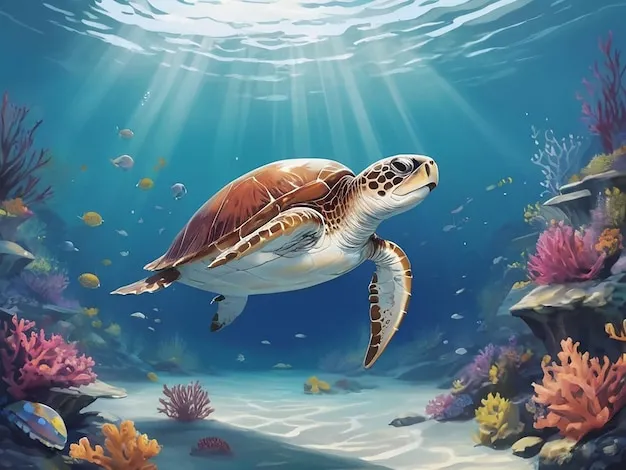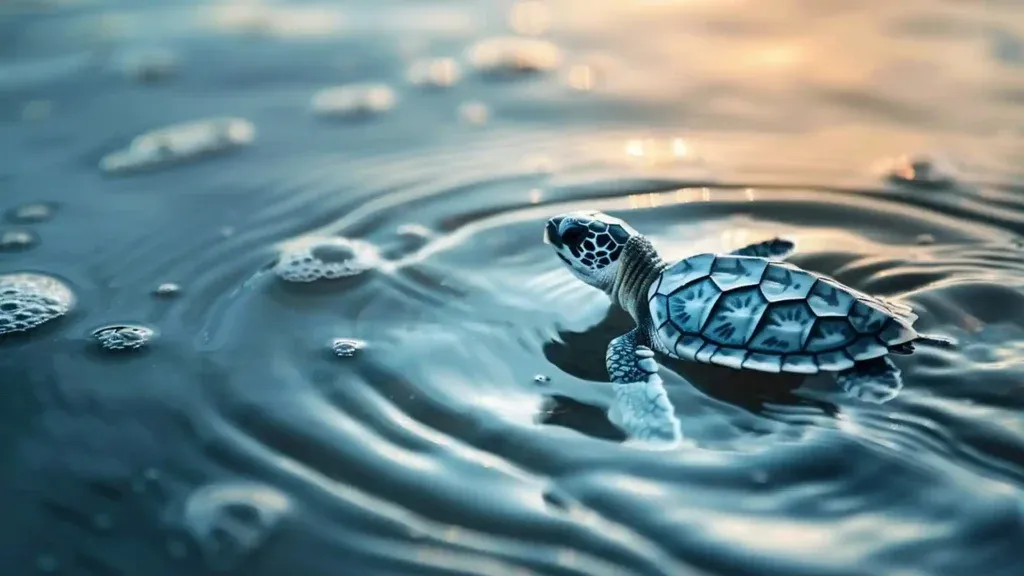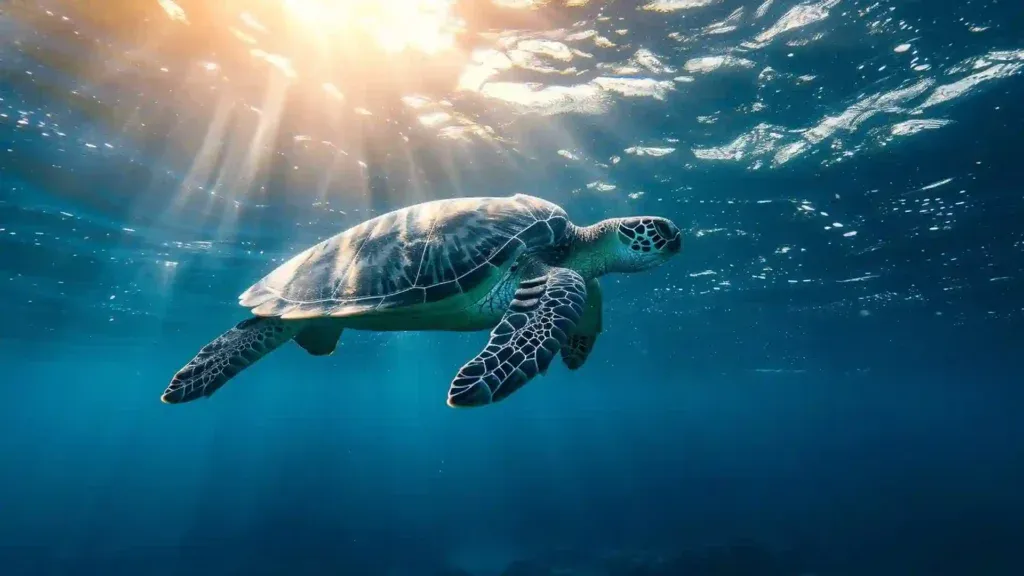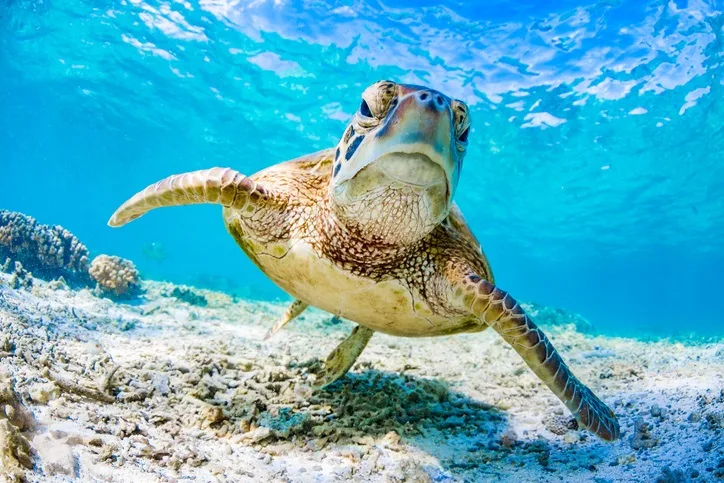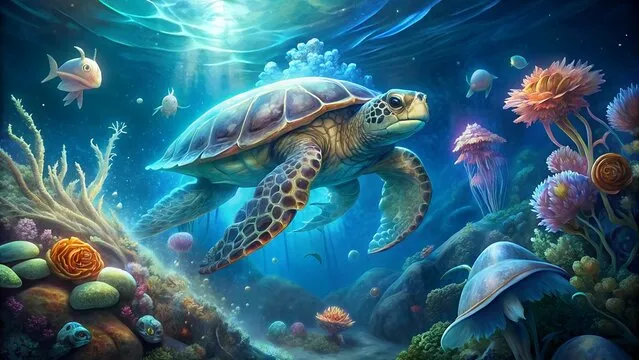Turtles are undoubtedly one of the most fascinating and cute:avcuk1fbj54= turtle creatures on the planet. With their slow movements, unique physical features, and calm demeanor, turtles capture the hearts of many. Whether you are captivated by their shells or the way they swim gracefully in the water, turtles are more than just adorable reptiles. They play an essential role in ecosystems and have remarkable qualities that make them stand out. In this article, we will explore the cute= turtle in depth, covering everything from their species, physical characteristics, behavior, and much more.
Contents
- 1 Introduction to cute:avcuk1fbj54= turtle
- 2 Physical Characteristics of Turtles
- 3 Different Types of cute:avcuk1fbj54= turtle
- 4 Behavior and Habits
- 5 Cute Turtle Facts
- 6 The Life Cycle of a Turtle
- 7 Habitat and Distribution
- 8 Conservation Status of Turtles
- 9 Keeping Turtles as Pets
- 10 Popular Turtle Breeds for Pet Owners
- 11 Fun Activities Involving Turtles
- 12 Conclusion
- 13 Frequently Asked Questions (FAQs) About Turtles
- 13.0.1 1. What makes turtles so unique and cute?
- 13.0.2 2. What is the lifespan of a turtle?
- 13.0.3 3. Are turtles difficult to care for as pets?
- 13.0.4 4. What do turtles eat?
- 13.0.5 5. How can I help with turtle conservation efforts?
- 13.0.6 6. What are the different types of turtles?
- 13.0.7 7. Why are some turtle species endangered?
- 13.0.8 8. Can turtles recognize their owners?
- 13.0.9 9. How often should I clean a turtle’s tank?
- 13.0.10 10. What are some popular pet turtle species?
- 13.0.11 11. Do turtles hibernate?
- 13.0.12 12. Can turtles live with other animals?
- 13.0.13 13. What should I consider before getting a pet turtle?
- 13.0.14 14. How big can turtles get?
- 13.0.15 15. Why do turtles bask in the sun?
- 13.0.16 16. What’s the difference between a turtle and a tortoise?
- 13.0.17 17. Do turtles bite?
- 13.0.18 18. What are the best locations to observe turtles in the wild?
- 13.0.19 19. What are some common health issues turtles face?
- 13.0.20 20. Can I release my pet turtle into the wild?
Introduction to cute:avcuk1fbj54= turtle
Turtles are an ancient group of reptiles that have been around for millions of years. These creatures, which can be found both on land and in water, are widely admired for their cute appearance and unique abilities. From freshwater turtles to sea turtles and tortoises, these reptiles exhibit fascinating adaptations that allow them to thrive in various environments.
Overview of Turtle Species
Turtles belong to the order Testudines, comprising over 350 species. Each species varies in size, habitat, and behavior, but they all share a common trait: their protective shell. The diversity among turtles is immense, with species ranging from the small cute freshwater turtle to the enormous leatherback sea turtle, which can weigh over 900 kg. These species are distributed globally, inhabiting diverse environments from forests and wetlands to oceans.
Importance of Turtles in Ecosystems
Turtles play a crucial role in maintaining the health of ecosystems. Their presence in aquatic environments helps regulate aquatic plant life and maintain water quality. On land, tortoises contribute to seed dispersal, facilitating the growth of new vegetation. As a result, the decline in turtle populations can have adverse effects on their ecosystems, making turtle conservation a priority for environmentalists. The cute:avcuk1fbj54= turtle deserves all the attention for its beauty and ecological significance.
Physical Characteristics of Turtles
Turtles have a distinct appearance that sets them apart from other reptiles. Their primary feature, the shell, is not just a form of protection but also a part of their skeletal system.
Shell Structure and Function
The shell of a turtle is made up of two parts: the carapace (upper shell) and the plastron (lower shell). These shells are composed of bone and covered by scutes, which are tough keratinized plates that protect the turtle from predators. The cute:avcuk1fbj54= turtle shell also serves as a safeguard against environmental elements. It is remarkable how each species has adapted its shell to suit its environment, from the hard shells of terrestrial turtles to the streamlined shells of sea turtles that enhance swimming efficiency.
Size and Variation Among Species
Turtles come in various sizes, from the tiny Bog Turtle, which measures only around 4 inches, to the enormous Leatherback Sea Turtle, which can grow up to 8 feet long. This variation in size adds to the charm of turtles, making them some of the most cute:avcuk1fbj54= turtle animals. Smaller turtles tend to be popular in the pet trade, while the larger species capture the attention of wildlife enthusiasts.
Unique Adaptations for Survival
Turtles have evolved several adaptations that allow them to survive in different habitats. For example, sea turtles have flipper-like limbs for swimming, while tortoises have sturdy legs suited for walking on land. Freshwater turtles, which are often considered the most cute:avcuk1fbj54= turtle, have webbed feet that help them move efficiently in water and on land. Their slow metabolism also helps them survive long periods without food, a useful adaptation for survival in harsh environments.
Different Types of cute:avcuk1fbj54= turtle
There are three major categories of turtles: freshwater turtles, sea turtles, and tortoises. Each type has unique characteristics that make them fascinating and cute in their own way.
Freshwater Turtles
Freshwater turtles are found in ponds, rivers, and lakes across the globe. These turtles are highly adaptable and are commonly kept as pets due to their small size and relatively easy care requirements. One of the most popular freshwater species is the Red-Eared Slider, a turtle known for its distinctive red markings and cute demeanor.
Sea cute:avcuk1fbj54= turtle
Sea turtles are ocean dwellers that travel vast distances during their lifetime. There are seven species of sea turtles, including the Green Turtle, Loggerhead Turtle, and Hawksbill Turtle. Sea turtles have specialized flippers and streamlined shells that make them efficient swimmers. Their graceful movements in the water often make them appear majestic and cute at the same time.
Tortoises
Tortoises are land-dwelling turtles known for their slow movements and long lifespans. They can live over 100 years and are found in diverse habitats, from deserts to forests. The Galápagos Tortoise, in particular, is a well-known species, admired for its size and gentle nature, making it both cute and awe-inspiring.
Behavior and Habits
Turtles exhibit a wide range of behaviors that are both intriguing and cute to observe.
Feeding Habits and Diets
Turtles have varied diets depending on their species. Freshwater turtles are typically omnivores, eating a mix of plants, fish, and insects, while sea turtles often feed on jellyfish, algae, and seagrass. Tortoises, on the other hand, are herbivores and consume large amounts of vegetation. The sight of a turtle munching on its food is undeniably cute:avcuk1fbj54= turtle, especially when they use their tiny, beak-like mouths to grasp their meals.
Mating Rituals and Reproduction
Turtles have fascinating mating rituals that can involve elaborate courtship displays, especially in the case of sea turtles. Once mating is complete, female turtles lay their eggs on land, burying them in sandy nests. The hatchlings that emerge from the nests are among the cutest creatures in the animal kingdom, as they quickly make their way to the water to begin their journey into adulthood.
Social Interactions Among Turtles
While turtles are generally solitary creatures, they do exhibit some social behaviors, particularly during mating season. They communicate using a variety of signals, including head movements and vibrations. These subtle behaviors may not always be noticeable, but observing turtles interact can be a cute and insightful experience.
Cute Turtle Facts
Turtles have always been the subject of myths, folklore, and even modern pop culture. Let’s dive into some of the most cute:avcuk1fbj54= turtle and fascinating facts about turtles.
Interesting Myths and Folklore
Turtles have been revered in various cultures throughout history. In Chinese mythology, the turtle symbolizes longevity and wisdom, while in Native American folklore, the world is said to rest on the back of a giant turtle. These myths add to the mystique and cute allure of turtles.
Record-Breaking Turtle Tales
Some turtles have achieved legendary status due to their extraordinary size or longevity. For example, the oldest recorded turtle lived to be over 180 years old! Additionally, the largest sea turtle, the leatherback, holds the title for the largest turtle species, adding to the cute yet awe-inspiring nature of these creatures.
Famous Turtles in Pop Culture
Turtles have also made their mark in popular culture. Characters like cute animated turtles in children’s cartoons have made turtles even more lovable. These iconic turtles have cemented their place in the hearts of people worldwide.
The Life Cycle of a Turtle
Turtles go through distinct stages in their life cycle, each stage more cute than the last.
Hatching and Baby Turtles
The sight of a baby turtle, or hatchling, emerging from its egg is one of nature’s most adorable spectacles. These tiny turtles face incredible odds as they make their way to the ocean, navigating predators and obstacles along the way.
Growth Stages and Lifespan
Turtles experience slow growth and can take several years to reach maturity. Their long lifespans allow them to experience multiple phases of growth, from the cute baby stage to adulthood. Depending on the species, turtles can live anywhere from 20 to over 100 years, making them some of the longest-living creatures on Earth.
Journey from Land to Sea
Sea turtles begin their life on land and spend most of their adult life in the ocean. Their transition from land to sea is a critical part of their life cycle and a momentous event in nature.
Habitat and Distribution
Turtles are found in nearly every corner of the globe, from tropical oceans to arid deserts.
Common Habitats of Turtles
Turtles are highly adaptable and can live in a wide variety of habitats. Freshwater turtles are commonly found in ponds and rivers, while tortoises inhabit dry, land-based environments. Sea turtles, on the other hand, roam the vast oceans, sometimes migrating thousands of miles.
Geographic Distribution Around the Globe
Turtles are distributed worldwide, with each species favoring certain regions. For instance, the cute:avcuk1fbj54= turtle Loggerhead Sea Turtle is commonly found in the Atlantic Ocean, while the Galápagos Tortoise is native to the Galápagos Islands. Their wide geographic distribution adds to their appeal as a diverse and resilient group of reptiles.
Conservation Status of Turtles
Despite their cute appeal and ecological importance, many turtle species are facing serious threats.
Threats Facing Turtle Populations
Turtles are under constant threat from habitat destruction, poaching, and climate change. Sea turtles, in particular, are vulnerable due to their reliance on specific nesting sites, which are often disturbed by human activities. The illegal pet trade also endangers many species, particularly cute:avcuk1fbj54= turtle freshwater turtles.
Efforts in Conservation and Protection
Numerous conservation efforts are in place to protect turtle populations, ranging from habitat preservation to laws regulating the trade of turtles. Conservationists are working tirelessly to save turtles from extinction, ensuring that these cute creatures continue to thrive in the wild.
How You Can Help
You can contribute to turtle conservation by supporting wildlife organizations, reducing plastic waste that harms sea turtles, and spreading awareness about the importance of protecting these cute animals.
Keeping Turtles as Pets
Turtles can make excellent pets, but there are important considerations to keep in mind before getting one.
Considerations Before Getting a Turtle
Owning a turtle requires a long-term commitment. Turtles have long lifespans, and caring for them requires proper knowledge of their needs. Potential pet owners should ensure they are ready to provide the right environment and care for their turtle.
Ideal Tank Setup for Pet Turtles
For pet turtles, providing the right tank setup is crucial. A well-maintained aquarium with appropriate filtration, temperature control, and basking areas is essential for keeping turtles healthy. Freshwater turtles, in particular, need a cute tank environment that mimics their natural habitat.
Proper Care and Maintenance
Turtle care involves regular tank cleaning, proper diet, and ensuring that the turtle has access to both water and dry land. Pet turtles require a balanced diet that includes a mix of protein and vegetables to ensure they stay healthy and cute.
Popular Turtle Breeds for Pet Owners
There are several species of turtles that are popular among pet owners due to their manageable size and cute:avcuk1fbj54= turtle characteristics.
Red-Eared Slider
The Red-Eared Slider is perhaps the most well-known pet turtle species. With its distinctive red markings and playful behavior, this cute turtle is a favorite among beginners.
Box Turtle
Box Turtles are another popular pet species, known for their domed shells and gentle nature. Their relatively small size and cute appearance make them ideal for pet owners looking for a land-dwelling turtle.
Painted cute:avcuk1fbj54= turtle
Painted Turtles are named for the vibrant markings on their shells, which make them one of the most cute and colorful turtle species. They are easy to care for and are a popular choice for freshwater turtle enthusiasts.
Fun Activities Involving Turtles
Turtles offer more than just companionship as pets. There are several engaging activities that involve these cute creatures.
Turtle Watching: Best Locations
Turtle watching is a popular activity for nature lovers. Some of the best locations for turtle watching include tropical beaches where sea turtles nest and freshwater habitats where cute turtles bask in the sun.
Educational Programs and Workshops
Many wildlife organizations offer educational programs and workshops focused on turtles. These programs are perfect for anyone interested in learning more about these cute reptiles and their role in ecosystems.
Engaging Kids with Turtle Crafts
Turtles are a popular subject for kids’ crafts. From making turtle-shaped paper crafts to painting turtle figurines, these activities are both fun and educational, helping kids develop a love for turtles at an early age.
Conclusion
Turtles are truly one of the most unique and cute:avcuk1fbj54= turtle animals in the world. From their diverse species and fascinating behavior to their importance in ecosystems, turtles captivate people of all ages. Whether you are watching a baby sea turtle hatch or caring for a pet turtle, these animals never fail to bring joy and wonder. Protecting and conserving turtles ensures that future generations will continue to be mesmerized by the adorable cute= turtle. Let’s work together to safeguard the future of these precious creatures.
Frequently Asked Questions (FAQs) About Turtles
1. What makes turtles so unique and cute?
Turtles are unique due to their protective shells, slow movements, and ancient origins. Their cute:avcuk1fbj54= turtle appearance comes from their tiny faces, slow pace, and often miniature size, especially baby turtles, making them endearing to many people.
2. What is the lifespan of a turtle?
Turtles can live for several decades, depending on the species. Some, like the Galápagos tortoise, can live over 100 years, while smaller species like Red-Eared Sliders can live for 20-30 years in captivity.
3. Are turtles difficult to care for as pets?
Turtles require specific care, including proper tank setup, regular cleaning, and a balanced diet. They also need both water and dry land areas in their habitat. While they are relatively low-maintenance, their long lifespan requires a long-term commitment.
4. What do turtles eat?
Turtles have different diets depending on their species. Freshwater turtles are often omnivores, eating insects, fish, and plants, while tortoises are herbivores that primarily eat vegetation. Sea turtles feed on jellyfish, algae, and seagrass.
5. How can I help with turtle conservation efforts?
You can help by supporting organizations dedicated to turtle conservation, reducing plastic waste to protect sea turtles, avoiding products made from turtle shells, and raising awareness about the importance of protecting these cute animals.
6. What are the different types of turtles?
There are three main categories of turtles: freshwater turtles, sea turtles, and tortoises. Each group has unique physical characteristics and habitats, from the cute small freshwater turtles to the massive sea turtles that swim across oceans.
7. Why are some turtle species endangered?
Many turtle species are endangered due to habitat destruction, pollution, illegal poaching, and climate change. Sea turtles, for example, face threats from fishing nets, plastic waste, and loss of nesting beaches.
8. Can turtles recognize their owners?
Turtles may not recognize owners in the way dogs or cats do, but they can learn to associate people with food and care. Over time, they may become more comfortable around familiar individuals, showing signs of recognition.
9. How often should I clean a turtle’s tank?
A turtle’s tank should be cleaned regularly to prevent the buildup of waste and harmful bacteria. Partial water changes should be done weekly, and the entire tank cleaned every month or two, depending on the size and filtration system.
10. What are some popular pet turtle species?
Some popular pet turtle species include the Red-Eared Slider, Box Turtle, and Painted Turtle. These turtles are known for their relatively easy care and cute appearances, making them popular choices among pet owners.
11. Do turtles hibernate?
Yes, many turtles, especially those in colder climates, hibernate during the winter months. This is known as brumation, a period of dormancy where the turtle’s metabolic rate slows down, allowing them to survive for long periods without food.
12. Can turtles live with other animals?
Turtles are generally solitary animals and may not interact well with other pets, especially in small enclosures. Some species may cohabit with other reptiles or fish, but care must be taken to ensure compatibility and space.
13. What should I consider before getting a pet turtle?
Before getting a turtle, consider its long lifespan, the required habitat (aquatic or terrestrial), its diet, and the commitment needed for regular care. Also, ensure you choose a species that is suitable for your living environment.
14. How big can turtles get?
Turtles vary significantly in size. Freshwater turtles like the cute Painted Turtle grow to about 6-8 inches, while sea turtles like the Leatherback can grow up to 8 feet long and weigh over 900 kg.
15. Why do turtles bask in the sun?
Turtles bask to regulate their body temperature and absorb UVB rays, which are essential for their health. Basking also helps dry their shells and skin, preventing infections. It’s common to see turtles basking on logs or rocks near water bodies.
16. What’s the difference between a turtle and a tortoise?
Turtles are mostly aquatic and live in water bodies like rivers, ponds, or oceans, while tortoises are land-dwellers. Tortoises have round, dome-shaped shells and sturdy legs, while turtles typically have flatter shells and webbed feet or flippers for swimming.
17. Do turtles bite?
Turtles can bite if they feel threatened, but most species are generally docile and won’t bite without provocation. It’s important to handle turtles gently and give them space to avoid stressing them.
18. What are the best locations to observe turtles in the wild?
Turtles can be observed in various environments depending on the species. For sea turtles, nesting beaches like those in Costa Rica or the Caribbean are great for turtle watching. Freshwater turtles can be seen in ponds and rivers across the world.
19. What are some common health issues turtles face?
Turtles can suffer from respiratory infections, shell rot, and vitamin deficiencies. Providing a clean, properly maintained environment and a balanced diet is key to preventing these issues.
20. Can I release my pet turtle into the wild?
No, releasing pet turtles into the wild is harmful to both the turtle and the environment. Turtles raised in captivity may not survive in the wild, and non-native species can disrupt local ecosystems. Always rehome turtles responsibly if you can no longer care for them.

